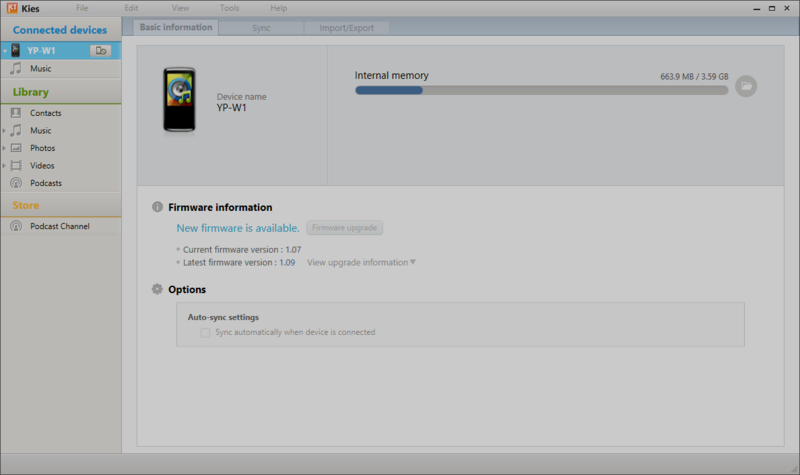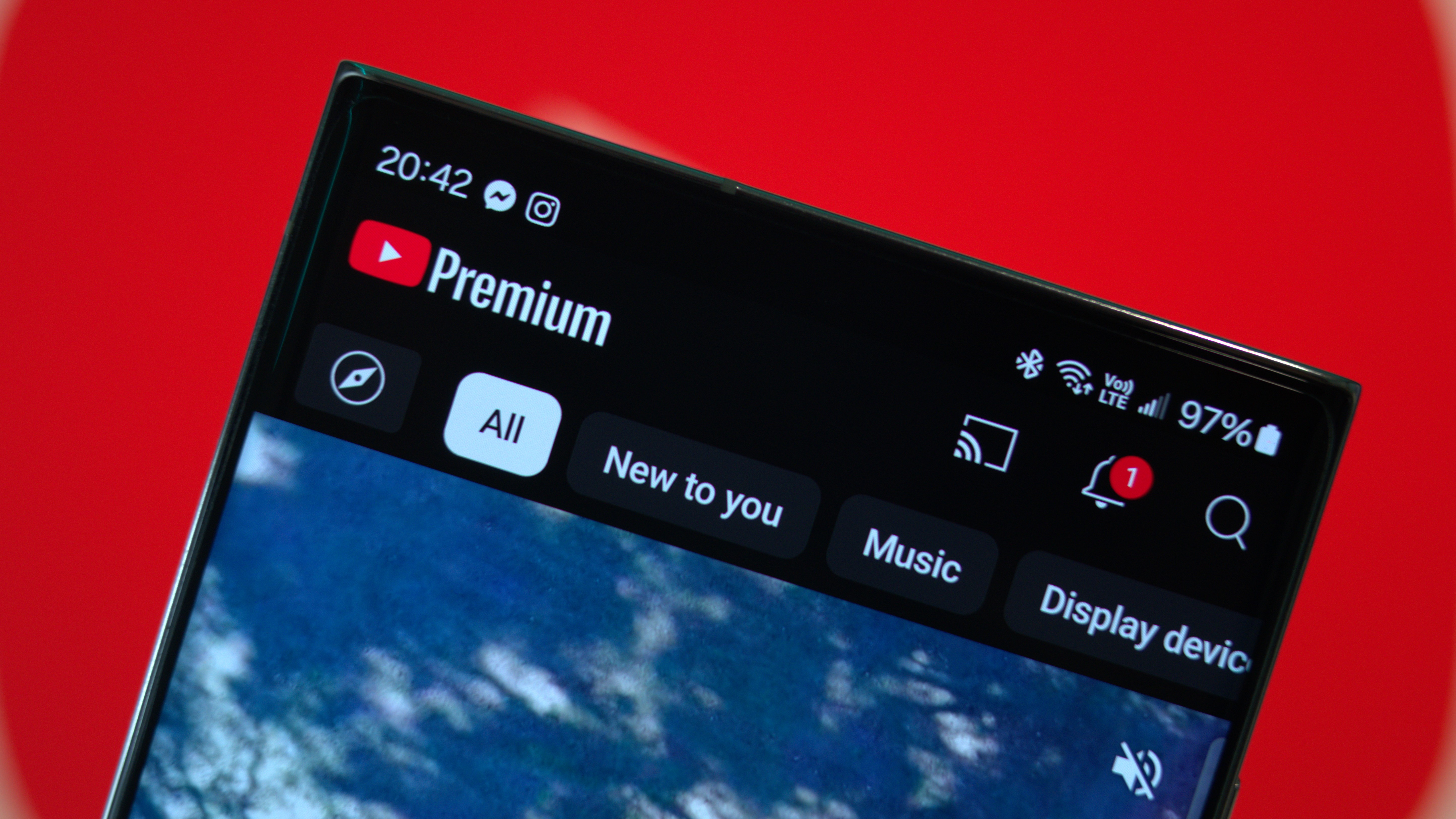Samsung Muse review: The S Pebble cometh
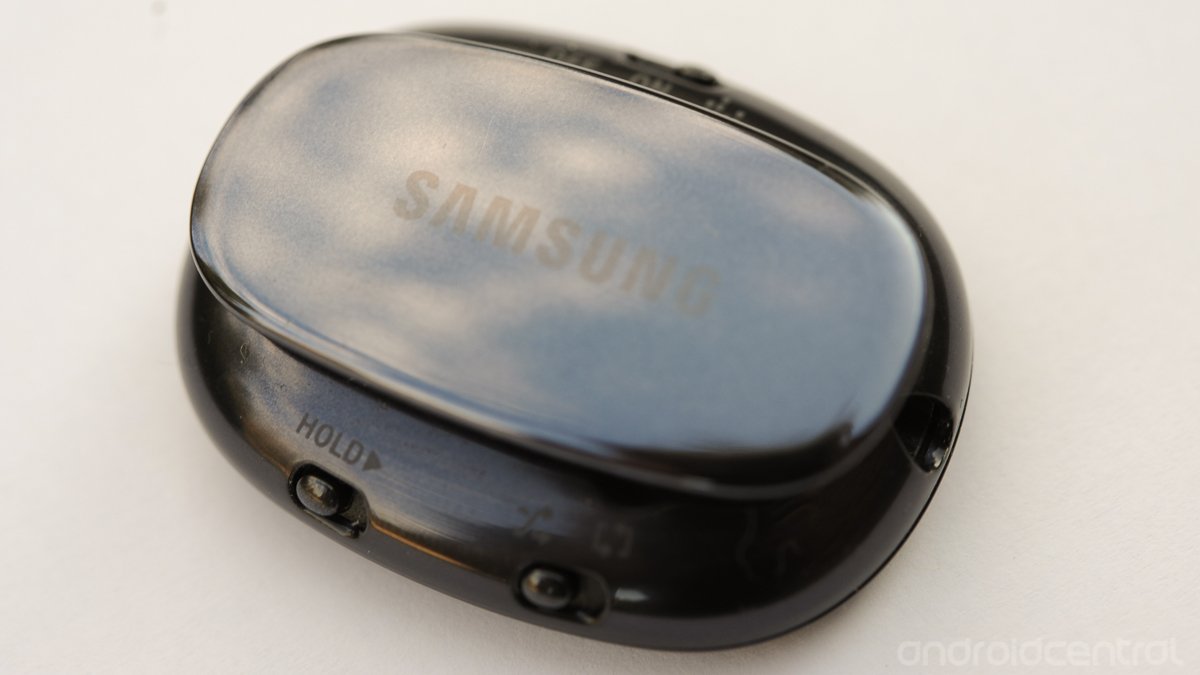
What the hell are we doing basically reviewing an iPod Shuffle in Galaxy S3 clothing? I mean, c'mon. It's nearly 2013. We can launch rockets from our phone. Play back a lifetime's worth of music that's never once hit a local hard drive. Why, then, are we holding this little blue pebble of a device in the palm of our hand called the Samsung Muse?
Because we can.
When Samsung showed the Muse (at the time it was called the S Pebble) at its Galaxy S3 event in London in May, we didn't pay it all that much attention. We've seen MP3 players before. This one at least brings something different to the table in that it will connect to your Galaxy S3 (among other devices) and sync music directly from the phone. Yeah. Kinda sounds like a pain in the ass to us, too. In actuality, though, what we're holding is a simple MP3 player that looks good, sounds decent and does a little something extra.
And you know what? I kinda like it.
The hardware
You know how we feel about unboxings, but this one's a little different. Here's what you get:
- The Samsung Muse player - it's got 4GB of storage, with about 3.6GB actually available to you.
- A 3.5mm audio jack to microUSB adapter
- A 3.5mm audio jack to USB adapter
- Earbuds
- Instruction manual
OK, so that's it. Ear buds you've seen before. The ones Samsung include with the Muse may at first seem a little reminiscent of Apple's newer ear buds, but side by side they're clearly different. So no worries there, patent police. The ear buds are surprisingly good, capable of more bass than you'd expect. Samsung's got a "SoundAlive" audio enhancer built in that significantly adds to the bass (while sacrificing the treble) that helps out here. The ear buds are hard plastic but not too uncomfortable. Don't throw them away before at least trying them.
The two adapters in the box serve two purposes. One connects to a phone (or tablet) via microUSB. The other connects to a USB port on a computer.
Get the latest news from Android Central, your trusted companion in the world of Android
Connecting to a computer (to KIES or not to KIES)
Let's be clear about this: The Muse does not only sync music from a phone. (Hell, it doesn't only sync music from a Samsung phone.) You can plug it into a computer (which you're going to want to do to charge it) and drag and drop files just like you would any other mass storage device. That's because when you plug it in, that's how it acts. Simple, and expected. Drag and drop files from a computer, and you're good to go. Works fine on Mac and PC.
One quick rant here: Samsung's instruction book, on Page 7, has an "Install the PC program" page. It's trying to get you to install Samsung's KIES program. While it's an unfortunate necessity for updating some Samsung devices, including the Muse. That said, as an MP3 player connected to a computer as mass storage, the Muse works just fine without KIES. Gluttons for punishment, we installed the version of KIES included on the Muse. First, once it installs, you'll be prompted to update to a newer version of KIES. That happens (the new version was dated Dec. 11), but still. Annoying.
But, you might actually want to go through these motions, as the Muse already has a firmware update waiting for it. We've got no idea what changed from 1.07 to 1.09, but whatever. We're suckers for updates. (For what it's worth, the update process wasn't horrible -- run KIES, download the update, unplug, turn off, wait a minute, then turn the Muse back on. Though the grammar and spelling in the update dialog did raise an eyebrow.) Other than updating the firmware, we can't really see a reason for using KIES with the Muse player -- just drag and drop files like the computer gods intended. That was all on Windows, though. On our Mac, KIES doesn't recognize the Muse. Awesome.
By the way, Samsung in its Muse manual suggests you delete the KIES directory off the device when you're done installing it. (Or if you don't want to install it, we suppose.) We'd heed those instructions, as it'll save 89 megabytes on the already limited device.
Connecting to a phone
Here's where the fun begins. Up until now, we've basically been dealing with a mass storage device. Not exactly a challenge, right? But in addition to acting like a basic drag-and-drop MP3 player, the Muse will sync music that's stored locally on a smartphone. Now it won't do it on just any smartphone. The Galaxy S3 is the only one officially listed. That said, we've been using the Muse with a GS3 running CyanogenMod 10 just fine, and same for a CM'd Galaxy Nexus. Figure if you've got a phone that can handle USB hosting, you're probably good to go, but your mileage may vary.
So how's it work? Samsung's got a "Muse Sync" app listed on Google Play that installs on pretty much whatever you want to try to install it on. Plug in your Muse using the 3.5mm-to-microUSB connector, and the app will launch automatically. There you'll see all the local music listed on your phone. Hit the checkbox, and it'll sync to the Muse. We had issues with it only listing files by song, which on my Galaxy S3 with a 64GB microSD card became a bit of a pain.
The tech of this is pretty straightforward; it's the necessity that has people scratching their heads, we reckon. With so great a push toward the cloud, it just seems a bit bassackward for Samsung to put out an MP3 player that sync music from a phone or tablet. On the other hand, say most of your music is in the cloud, be it on Google Play Music, or Samsung's Music Hub, or Amazon or wherever, and you don't have a local storage solution in your house. How to get that music to the Muse? Easy. Download it to your phone, then sync. That makes sense. But that's a long way to go to get music onto a 4GB device. Other folks keep their music locally on their phones, so this makes more sense.
Transfers are pretty quick. No headaches there. We did have a few instances where our phones didn't want to recognize the Muse, but a quick reboot took care of that. (That may be less of an issue on a stock Galaxy S3, but neither is it keeping us up nights.)
The pebble itself
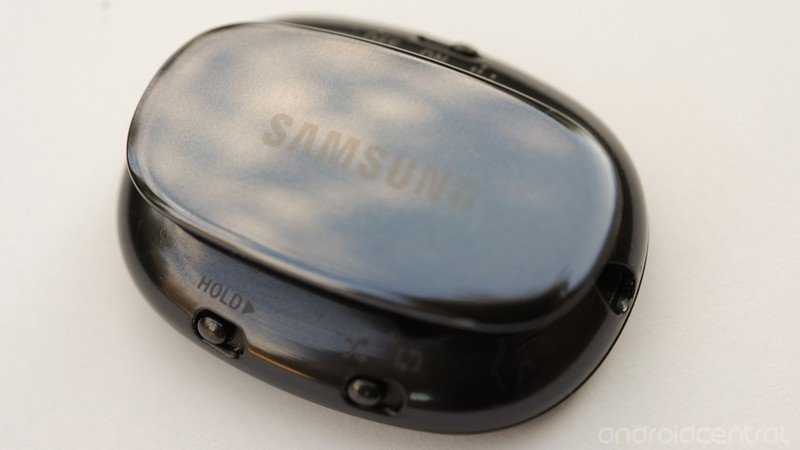
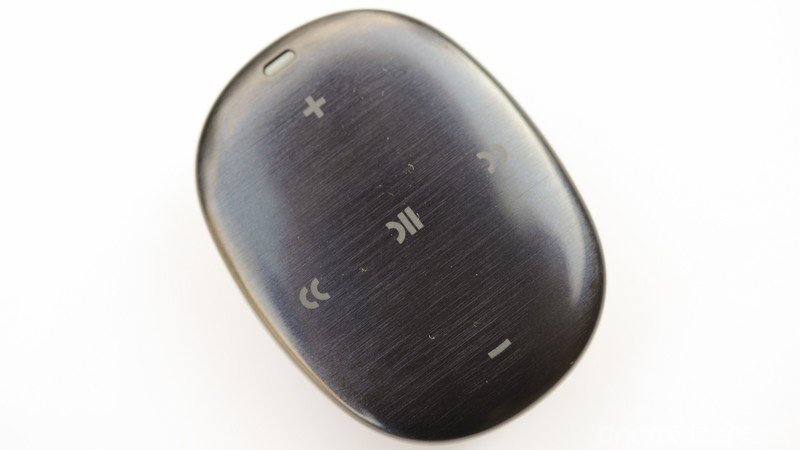
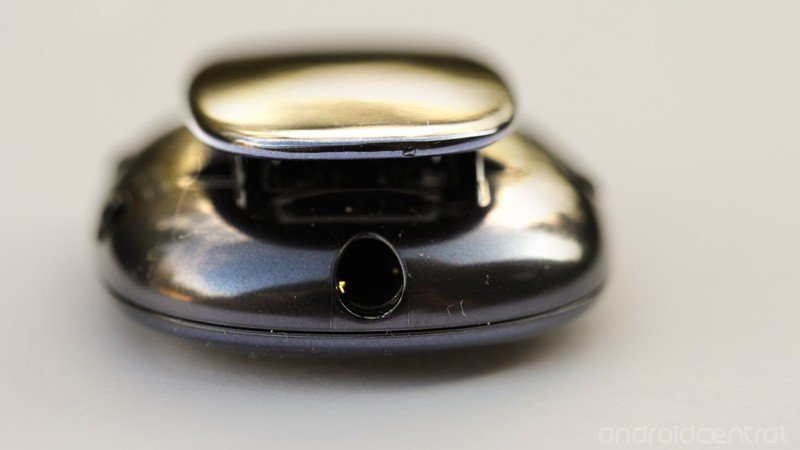
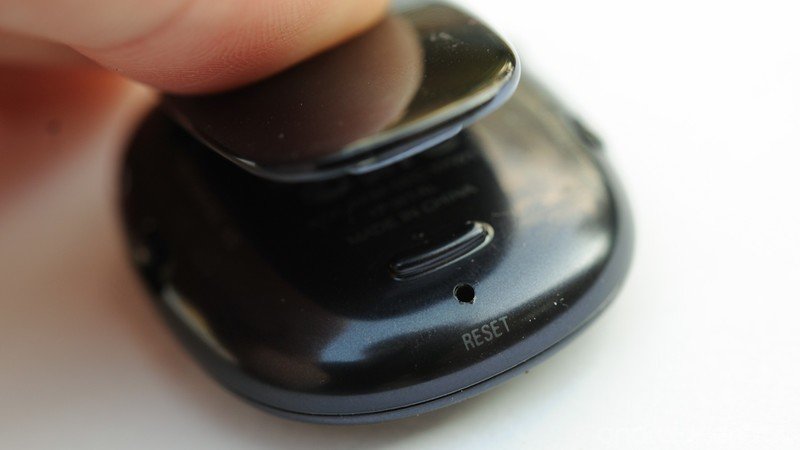
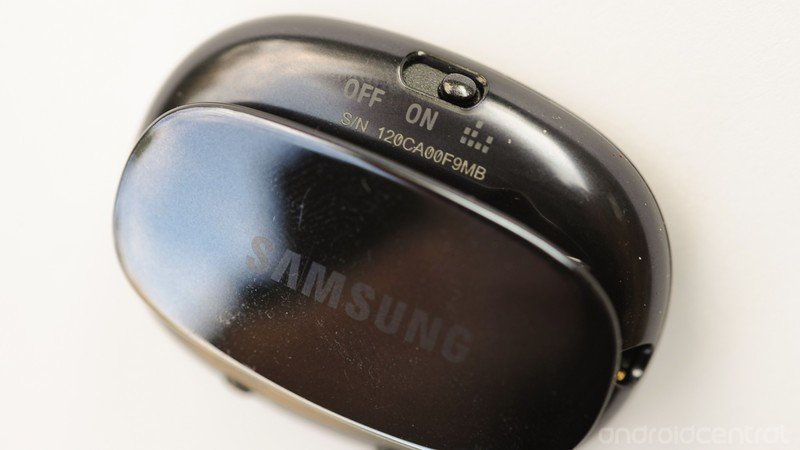
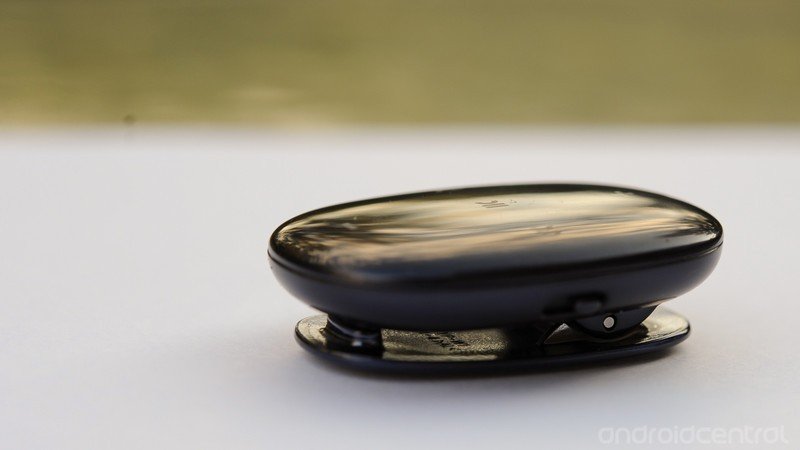

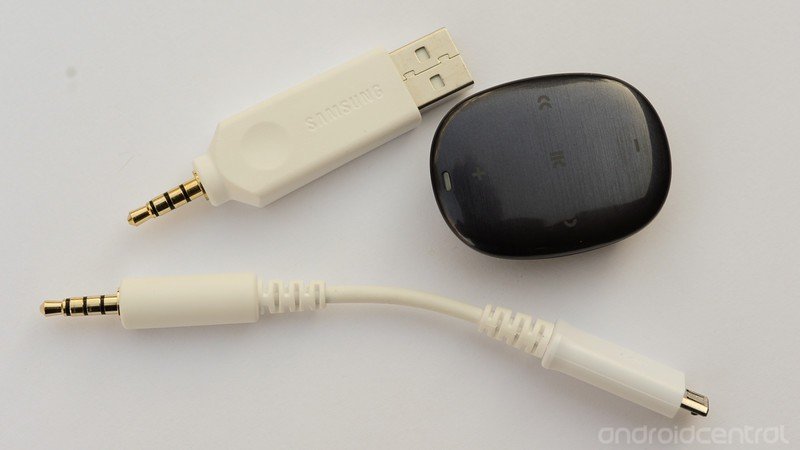
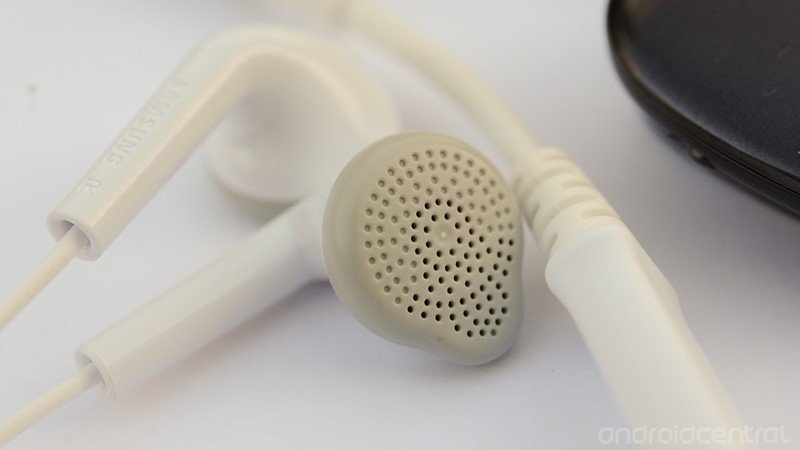
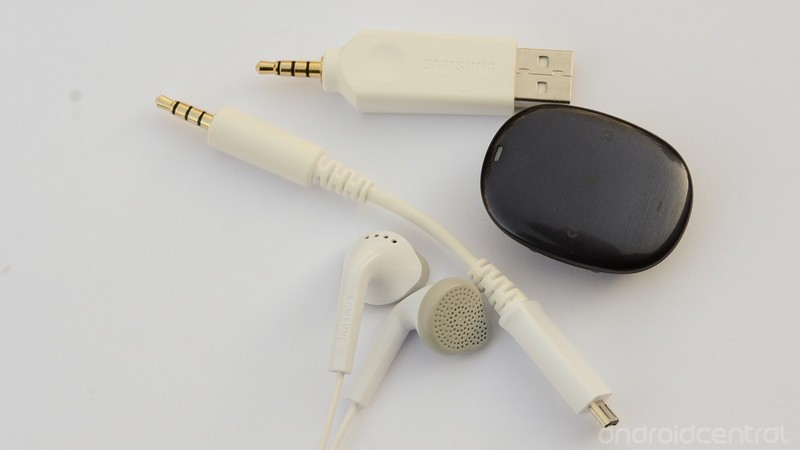
A thousand words in -- perhaps it's time to actually talk about the Muse itself. The Muse is the size and shape of a small, flat, rounded river rock. That's not by accident -- remember Samsung's all "Inspired by nature" in 2012. It's a nice design, with a small belt clip on the back.
The face of the Muse has capacitive buttons for volume up/down, forward and reverse, and play/pause. The volume buttons are obvious enough, as are forward and reverse. But play pause forgoes the traditional arrow and two-line pause indicator for a single half-circle and two lines. It keeps the same design as the forward/reverse buttons, but it just looks strange as play/pause. The buttons themselves are simple enough to use. Tap and go. (When the Muse puts itself in sleep mode after 10 seconds, hold one of these buttons for a second to wake it back up.)
There's an LED indicator on the face as well. Red for low battery/charging, green for more than 11 percent battery and when it's fully charged. Speaking of the battery, Samsung touts up to 6 hours of playback on a single charge.
You've got three slider switches on the Muse as well. One toggles shuffle mode. Another turns on the "Hold" function. And the third is on/off/SoundAlive, which as we mentioned above boosts the bass while killing treble.
Hidden beneath the belt clip is a pinhole reset button, just in case.
Other items of note:
- The Muse is available in the same pebble blue color as the Galaxy S3, or in white.
- It weighs 13.5 grams, or about as much as 13.5 grams.
- Supported file types: MP3, WMA, FLAC and OGG. (Lossless FTW!)
- Again, it's only got 4GB or storage (OK, about 3.6GB.)
- You'll need Android 3.0 and up for this.
Where to buy
You can get the Samsung Muse directly from Samsung. (Get it in blue, or get it in white.) Officially it's $49.99, but there are some 50 percent off codes floating around on occasion that might cut that in half.
The bottom line
I'm digging the pebble. It's designed to be the sort of lightweight MP3 player you might wear to the gym, and as that it performs wonderfully. As a more full-time player, you're obviously missing a display and proper scrubbing. But you knew that going into this. It's a "shuffle"-type device, made even more evident by the fact that I haven't quite figured out how it decides what order to play the songs. I could look at the app again, I suppose, but with a device like this I really don't care that much.
Here's the thing: Anytime someone says "Nobody does that, so this isn't necessary," they're wrong. There's a market for this sort of MP3 player. Always has been, always will be, even if that market isn't nearly as big as it once was.
The Muse is a very basic MP3 player that just happens to also be able to pull music off a compatible phone. Samsung calls it "the perfect music companion to your Samsung Galaxy device." And for $50, it's not a bad one. (For $25 with a coupon code it's even better and makes the mere 4GB of storage easier to swallow.) It's also another example of how much Samsung has invested into its mobile line, bringing along accessories like this. The Muse isn't likely to affect Samsung's bottom line one way or another -- it's just a cool accessory.
For our money, the Samsung Muse is a fun little MP3 player. No more, no less.
